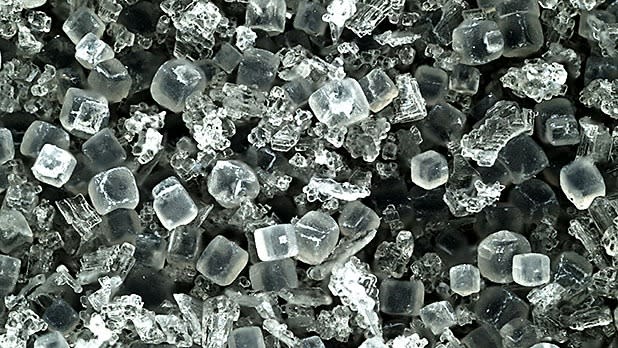You’re Probably Salting Your Food All Wrong

(Photo Courtesy of William Andrew / Getty Images)
“In America [salt] was just this white stuff you never thought about,” Mark Bitterman says. Twenty-five years ago, he was motorcycling through Europe when he was blown away by a steak he ate. The waiter said it was just a steak with salt, so Bitterman looked closer and saw silvery crystals that crunched and added bursts of flavor to each bite. He was hooked, and raced out to Normandy to learn more about how the salt was made.
Related: How To Utilize The Spices You Never Use
Today, Bitterman is a selmelier, a term he coined for a person who is to salt what a sommelier is to wine. He has traveled the world educating himself about salt; has written two books about it; owns three stores called The Meadow where salt is a premier product; and now has his own salt company, Bitterman Salt Co., based out of Portland, Oregon. Here, he discusses everything you need to know about salt and how to up your salt game.
It’s An Ancient Tradition
The saltworks Bitterman himself visited in Normandy had been in continuous use since Trappist monks worked there in the 11th century, but its history went even further back, to Roman and Celtic use. Salt is processed from mines or evaporated from seawater or spring water, and many saltworks have existed for thousands of years — the earliest example is believed to be 8,000 years old. Some of them have been producing salt the same way ever since. Salt was once of great value, too: Sixth-century Moorish merchants traded salt ounce-for-ounce with gold, and Roman soldiers were paid partly in salt (the phrase “being worth your salt” comes from this time). But most cultures around the world had and continue to have a way of producing salt. After all, salt is and always has been something we need to survive.
Related: The One Ingredient Your Seafood Recipe is Missing
It’s Not “Just Salt”
The types of salt and the techniques for using it are numerous, matter enormously, and can instantly make your cooking better. Bitterman recommends only using natural salts, like fleur de sel, sel gris, and flake salt, because of the character they add to cooking and their many uses. “People forget that [salt is] a food,” Bitterman says, so in its natural state it’s going to make whatever you’re adding it to that much tastier. Depending on what you want your dish to do, pick a natural salt accordingly. If you want a salt to disappear and not be in the way, choose a fine salt like fleur de sel; if you want a burst of flavor that then disappears, try a flake salt; if you want a bold, evolving flavor, choose a coarser salt like sel gris.
Related: Surprisingly Simple Tips to Become a Better Cook
Kosher and Iodized Salt Don’t Cut It
Americans started paying more attention to where our food was coming from in the 1970s, but Bitterman says we haven’t paid enough attention to salt. Kosher and iodized salts (and that cheap tube of sea salt) are mechanically harvested — they’re almost 100% pure sodium chloride, while natural salts will have only 6–9% trace minerals. “If you taste kosher salt next to a natural salt like fleur de sel, you will immediately recognize it tastes awful,” Bitterman says. Next to water, salt is the least expensive ingredient in your kitchen, even if it’s a really high-quality salt. So, he says, if you’re already looking to cook with high-quality ingredients, why not make natural salt another part of your kitchen?
“We all grew up with salt just being a word, ‘just salt your food’, and what we have to recognize is that’s actually not historically the way salt has been, and it’s a missed opportunity in the modern kitchen,” Bitterman says. Looks like it’s time to reach for that fleur de sel.
By Elyssa Goodman
More from Men’s Journal:
22 Uses for Vinegar That You Hadn’t Thought Of
How to Pick a Wine to Cook With
The Best Salt Types for Cooking
